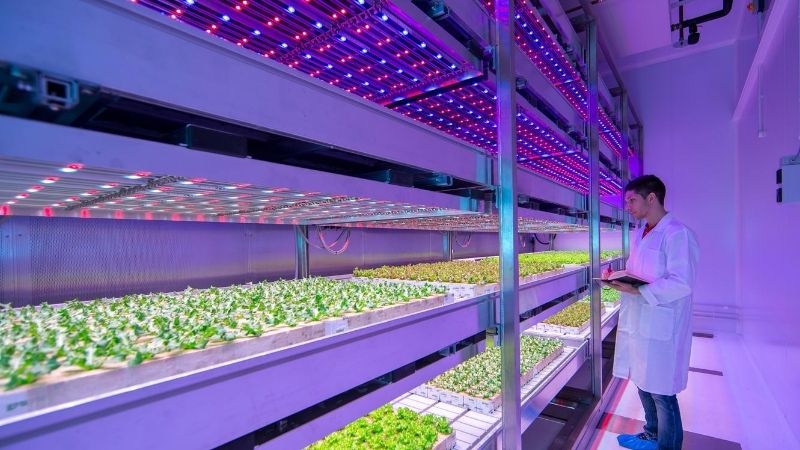Global warming, climate changes and increasing world population are posing threats to the planet we are living on and putting pressure on food security. Leading lighting supplier Signify recently shares its viewpoint of how horticulture lighting based on LED technology can be an enabler for sustainable alternative food production.
Signify suggests that using artificial lights in horticulture is one way to increase demand without driving up the resource usage.
Grow lights can either supplement natural daylight or replace it entirely. Using them creates a controlled farming environment, often in places previously unsuitable for growing food. This produces a wealth of benefits including the ability to fine-tune quality and increase yield. They also, and perhaps more importantly, reduce environmental impacts like the need for land, water, pesticides, and the distance food travels to reach your plate.
In a case with a Russian tomato grower, Signify demonstrated how science-based lighting solutions support the needs of indoor agriculture. The Dutch company’s LED lights made all year cultivation in Moscow possible.

(Image: Signify)
The lights have contributed to improvements in the tomatoes’ growth predictability and quality; the greenhouse can now supply fresh produce to Moscow on the day it’s harvested. This helps meet the demand for locally grown fruit and vegetables in Russia. Similar success has been seen in France where Jardins Réunis and Cheminant have become the first two growers to produce high-wire LED-lit cucumbers in the country and have seen quality throughout the year.
Signify’s horticultural lighting range has also helped the production of vertical farms where crops are grown indoors in multi-layered systems to maximize space.
In Milan, Signify is providing lighting systems to Planet Farms, a company that will have finished construction on Europe’s largest vertical farm by the end of the year. It will operate an innovative integrated growth process where the production is entirely automated – this means that the consumer will be the first to touch the crop.

(Image: Signify)
The farm will also implement the Philips GrowWise Control System, where growers can create custom ‘light recipes’ that give full control of the outcome of the crop’s quality. Different plants have different light needs at different times, and the system allows growers flexibility in luminosity and color to meet the needs of growth phases – it works seamlessly with climate management systems too.
And it’s this – quality combined with sustainability – that will drive the success of horticultural lighting systems. Indoor farms that use LEDs and little heat can be significantly less impactful on the environment than large-scale traditional outdoor farms. As cities continue to become larger metropolitan hubs and the amount of arable land decreases, growers should consider working indoors and upwards more and more– smart energy efficient artificial lighting will be key to achieving this.





 CN
TW
EN
CN
TW
EN







